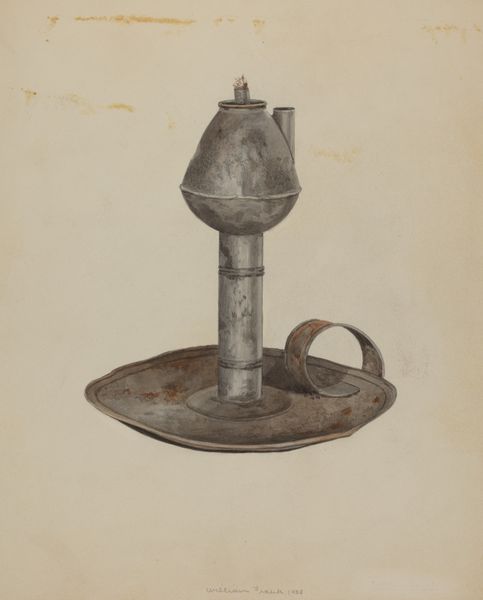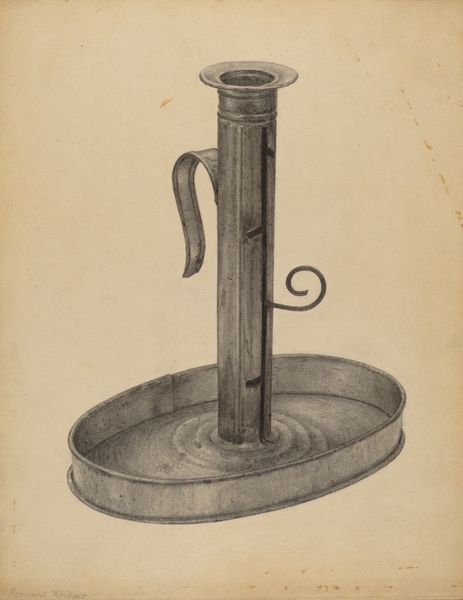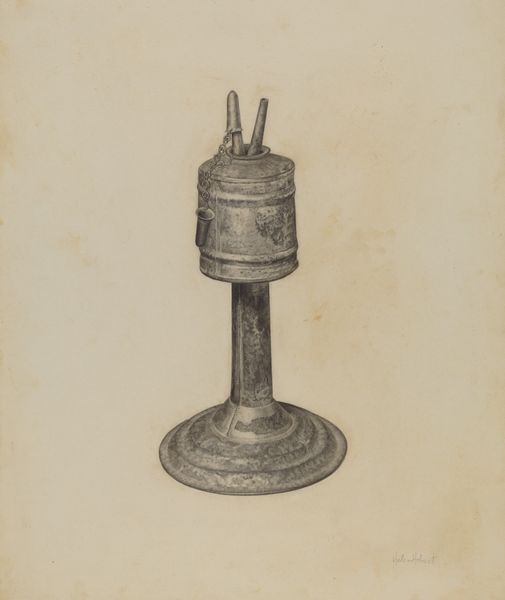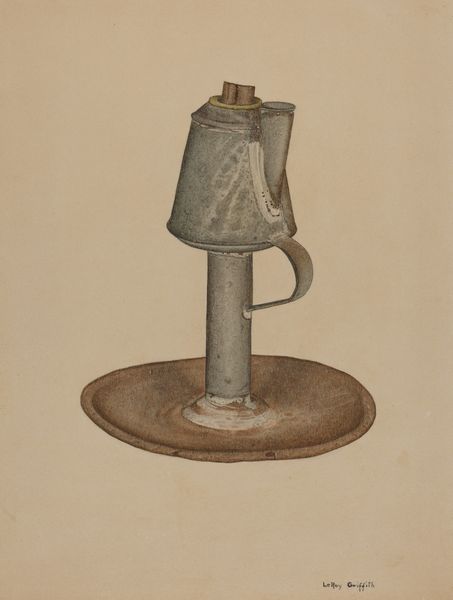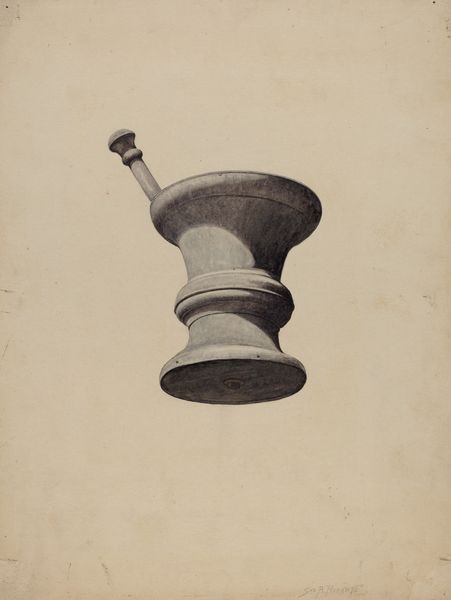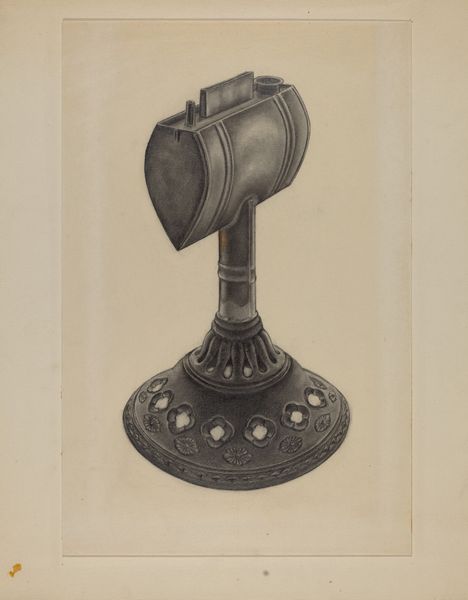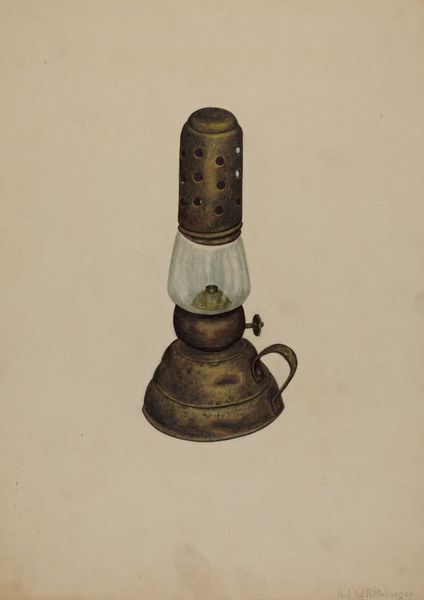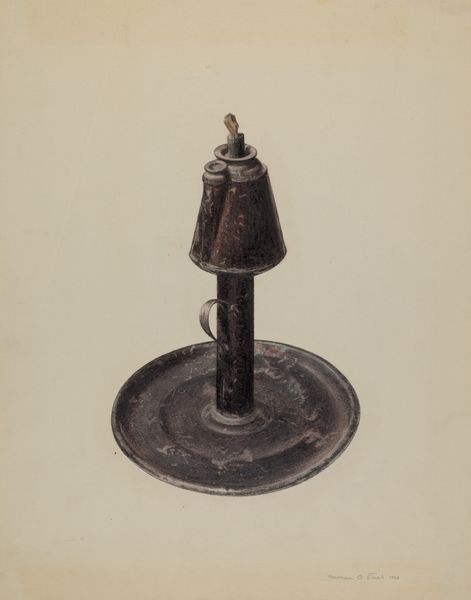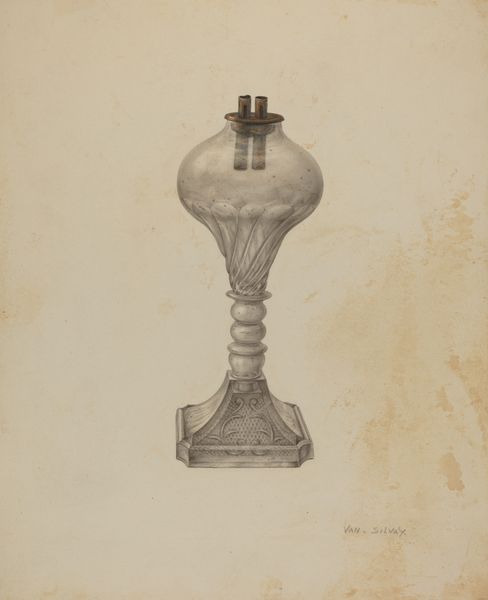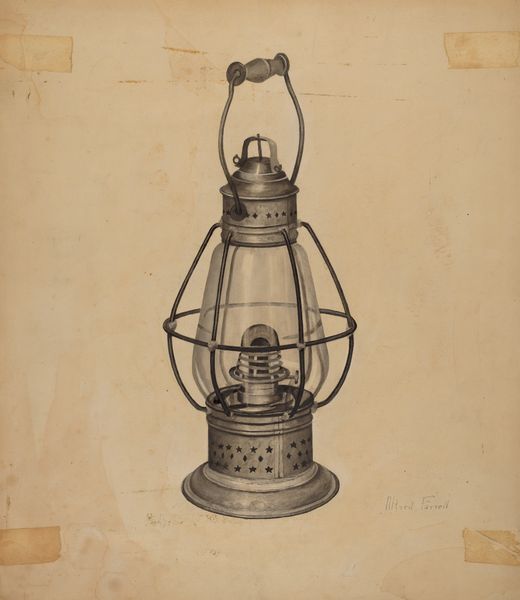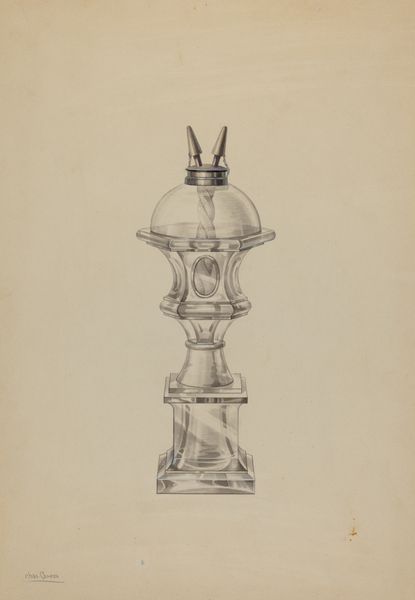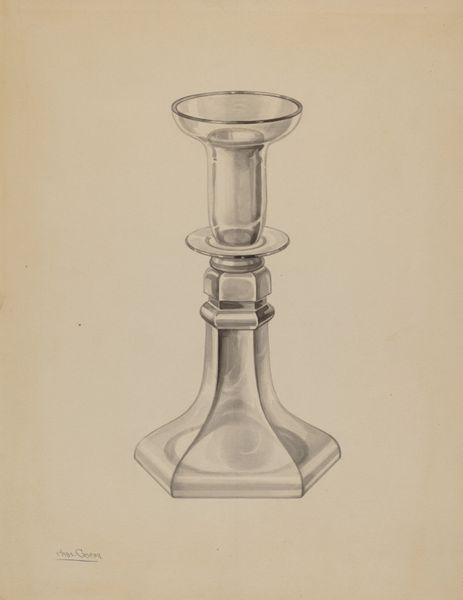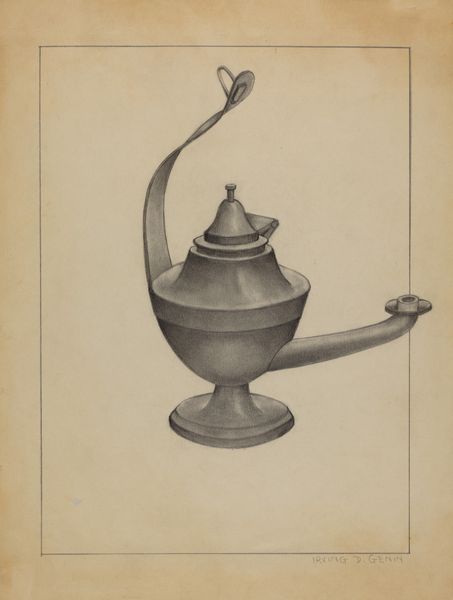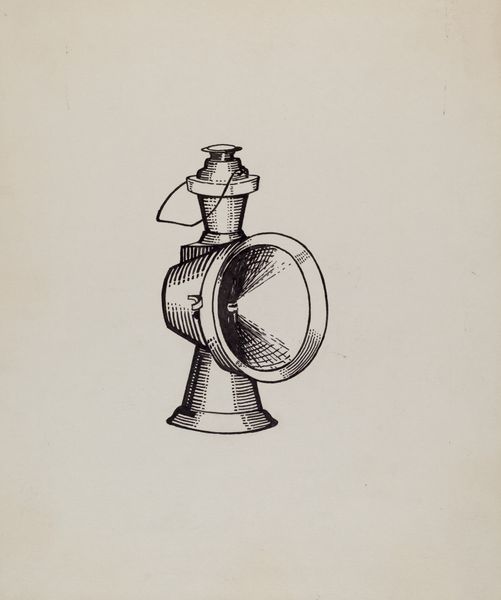
drawing, pencil
#
drawing
#
pencil sketch
#
pencil drawing
#
pencil
#
watercolor
#
realism
Dimensions: overall: 35.6 x 26.7 cm (14 x 10 1/2 in.) Original IAD Object: 12" high;
Copyright: National Gallery of Art: CC0 1.0
Editor: Here we have Claude Marshall's "Betty Lamp and Stand" from around 1940, rendered in pencil. There’s a delicate realism here, almost ghostly in its simplicity. What do you see in this piece beyond just an antiquated light source? Curator: It strikes me as more than just a still life. The Betty lamp, historically, represents more than illumination. It's often tied to the domestic sphere, and traditionally to women's work. Given the period, c. 1940, when gender roles were undergoing significant shifts due to the war, I wonder if Marshall is subtly commenting on these changes. The realism flattens the light source but gives presence to this historical item. What is the social labor attached to its form? Editor: That’s fascinating, I hadn’t considered the gendered aspect of the object itself. So you think Marshall might be using this everyday object to allude to broader societal changes? Curator: Precisely. The choice of pencil, a readily available medium, and the tight, almost documentary style, speaks to accessibility and a kind of visual record-keeping. Is it simply a faithful reproduction, or is there something subversive happening, bringing the labor to light, making this common tool something of cultural importance? Editor: So, in essence, by depicting something so ordinary, Marshall might be elevating the significance of the labor and roles typically associated with it. I was seeing it as a nostalgic rendering of the past. Curator: And it can be that, too. The beauty of art is its multilayered nature. By considering the context, though, we open up new avenues of interpretation. Does the very ordinariness provide light to lives passed? How has history recorded that lives took place? Editor: This has completely changed how I see the drawing. I appreciate learning how social and historical factors deepen one’s engagement with a piece. Curator: Exactly. It's about seeing the threads connecting the artwork to the world around it and illuminating those conversations.
Comments
No comments
Be the first to comment and join the conversation on the ultimate creative platform.
